Privacy fences are the most common backyard fences used in American homes today. They come in many forms and styles, from traditional wooden boards to more modern alternatives like vinyl or concrete fences. Many people prefer privacy fences because they can block unwanted views into their backyards while allowing them to see over them.
But if you’re unsure how to build or install one, here is what you need to know before getting started on your project.
Alternative Models of Privacy Fences
First, privacy fencing is much more than just simple wooden boards. It can be made up of many different materials, including stone, brick, chain link, and even concrete blocks. The best way to determine which material will give you the best privacy fence is by first figuring out what you want to accomplish with it.
For example, a privacy fence made from stone probably won’t be good enough if you’d like to keep your guests from seeing into your backyard. You’ll also need to look at the height and thickness of the wall, as well as any other features that might make it unsuitable for blocking out views.
Some privacy fences are meant more for aesthetic purposes than practical ones. For instance, a privacy fence built around a garden or patio would likely have no walls. Instead, it would consist only of rows of decorative wooden pickets about two feet apart. This privacy fence would allow lots of natural light but still provide some privacy.
Another style commonly seen in North America would be a low-profile privacy curtain. These curtains are usually made from either thick chain links or vinyl fencing. Their purpose is to block out light while letting plenty of airflows through. If you installed this privacy fence inside your house, you wouldn’t notice its presence.
In addition to the type of privacy fence you choose, there are several other important considerations when installing a new fence.
Ideas for Privacy Fences in Your Backyard
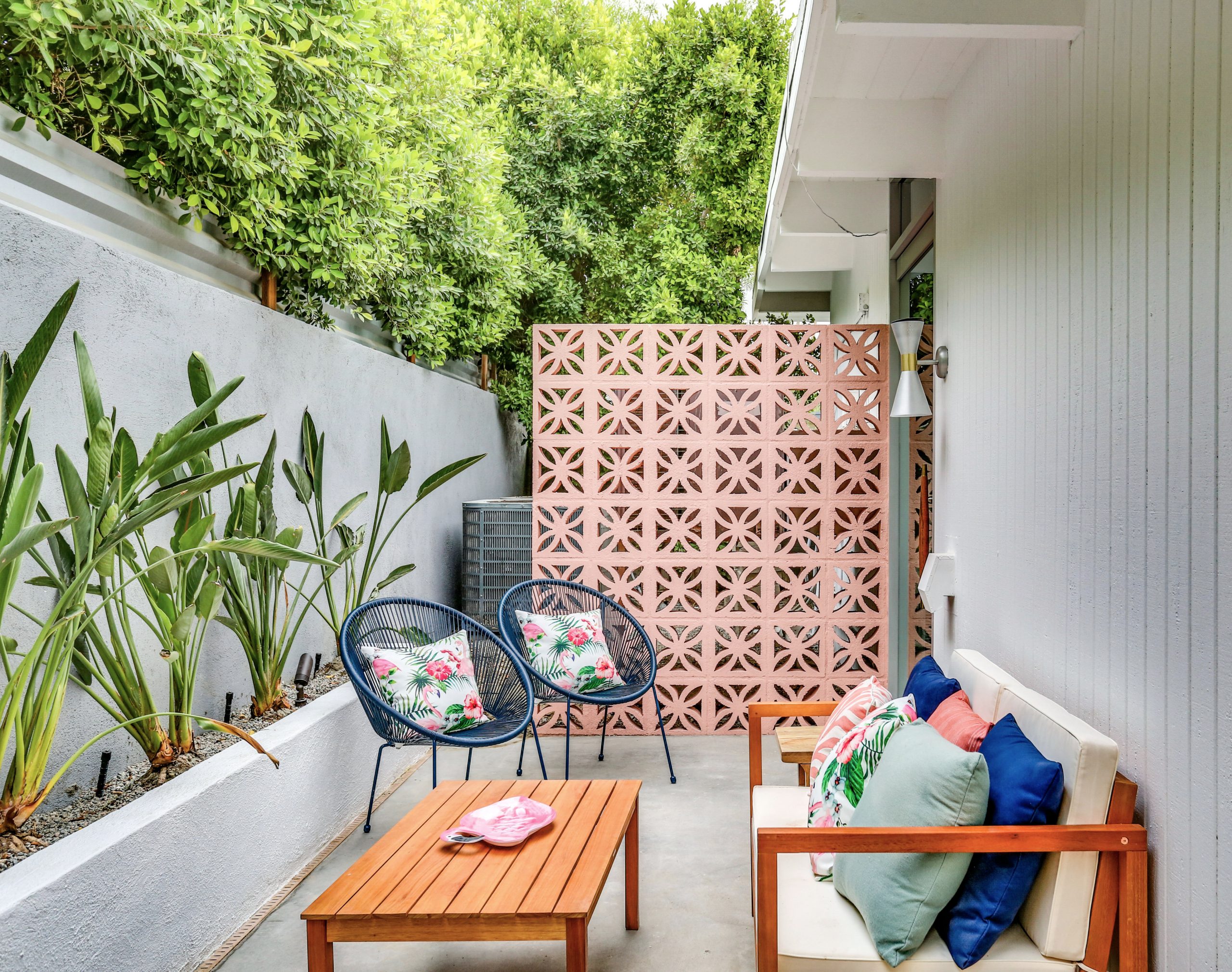
Before you buy the materials needed to build your privacy fence, it’s helpful to think about exactly what you intend to do with it. There are three main uses:
- To block off your yard from view
- To block off the entire back of your house from view
- To create a barrier to separate your property from the neighbor’s
If your goal is simply to block off your yard from view, you may be able to get away without having a privacy fence. But if you want to create a barrier between your yard and the one next door, you will need to go a step further by adding a privacy fence along the backside of your house.
This is especially true if your neighbors have ever expressed annoyance about being able to see into your yard. In that case, you should consider installing a privacy fence that extends to the edge of your property line.
The length of the privacy fence depends on how tall you want it to be and whether you plan to keep the area enclosed or open. Typically, taller fences take longer to build and require more installation time. However, if you’re looking to hide something in your yard, a tall privacy fence could be better than a shorter one.
What Supplies Are Necessary to Construct a Privacy Fence?
There are dozens of options available when choosing a privacy fence material, so you’ll need to research which will work best for you. Some of the more popular choices include:
- Wooden boards
- Concrete
- Stone
- Chain link
- Vinyl panels
These materials each offer different benefits, depending on your needs. Wood is typically the cheapest option but is also the least durable. Concrete and stone will hold up against weather damage, but they cost much more initially. Chain link is strong and easy to install, but it doesn’t last very long outdoors due to the elements. Vinyl is relatively inexpensive yet durable.
You should always check with your local building department to determine if these materials are allowed in your area. If not, you might have to replace them every few years.
If you live in a colder climate, you might also want to consider installing a privacy fence from the insulated board. Although it isn’t as warm as a wooden privacy fence, an insulated board can help insulate your yard from the cold winter winds.
How far apart do you space the pickets?
When deciding how wide your privacy fence should be, you must consider both the width of the baseboard molding surrounding your home and the spacing between the pickets themselves.
The baseboards are the vertical strips that run along the bottom of your home’s exterior siding. These are usually painted white and serve to add depth and definition to your home’s façade.
When determining the size of your privacy fence, you should measure it to match the width of the baseboard moldings. You should also measure the spacing between the pickets to match the baseboard moldings. To figure out the distance between the pickets, multiply the number of feet in between by four. So if your baseboard moldings are 16 inches wide, the pickets should be 24 feet apart.
How do you prevent gaps between pickets?
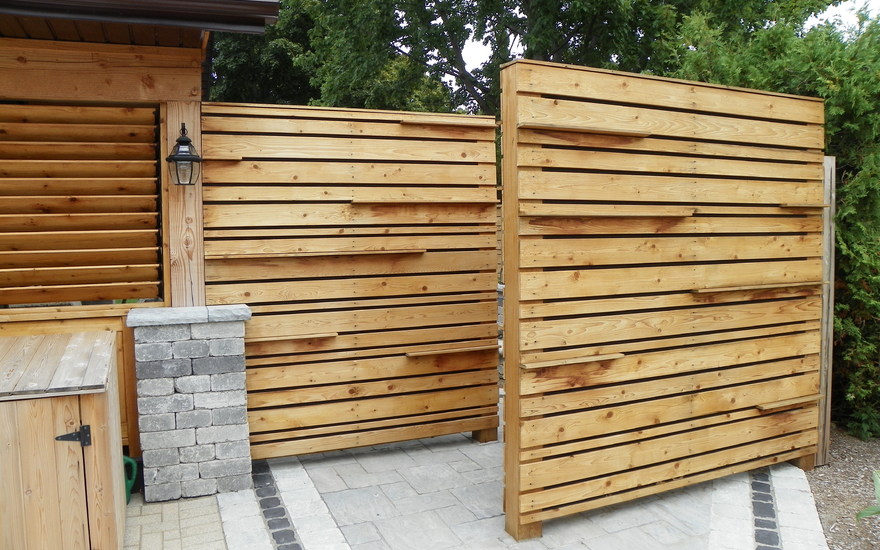
One potential problem when building a privacy fence is that the pickets can sometimes become loose and fall out of alignment, creating gaps between them. Even worse, some of them may completely disappear due to rot, warping, or decay.
One way to prevent these problems is to install a quality locking mechanism. These mechanisms often consist of metal brackets that connect horizontally and vertically. They attach directly to the top of the pickets and then lock into place.
The bracket is secured using a metal pin, which prevents the picket from rotating. Once the pin is removed, it slides into a hole in the bracket and locks it securely.
Although these locking mechanisms aren’t cheap, they are worth the investment. A high-quality locking system ensures that your privacy fence stays secure and straight and helps prolong your fence’s life by preventing rotting and warping.
Other ways to prevent gaps between the pickets include placing bricks or cinder blocks under the bottom row of pickets. Doing so prevents the ground from moving and causes the pickets to shift sideways.
Another method is to place a layer of sand (or similar filler) beneath the bottom row of pickets. Sand can easily expand and contract with the seasons, which keeps things level and eliminates gaps.
Once you’ve determined the type of privacy fence you want to build, you can now move ahead with purchasing the necessary materials.
What sort of wood is used to build a privacy fence?
According to Extremehowto, Although some wood species, including cedar and cypress, contain natural oils that guard against rot, insect infestation, and chemical corrosion, treated lumber is the most popular and affordable option for wood fences.
Return to alternative models of backyard privacy fence you can try to secure and enrich your curb appeal; check out the following
10 Backyard Privacy Fence Options Video
The backyard packs a lot of fun. You can kick back and relax there. Even better, you can invite your friends or neighbors to come over to have a barbeque party. If your yard is spacious, you can build a pool or playground for your kids.
However, it will not be fun anymore if your pesky and nosy neighbors keep staring at you and your family when you spend your leisure time in the backyard. For this reason, you need to build a privacy fence. If you are seeking some ideas to enclose your backyard, consider these 10 backyard privacy fence options.
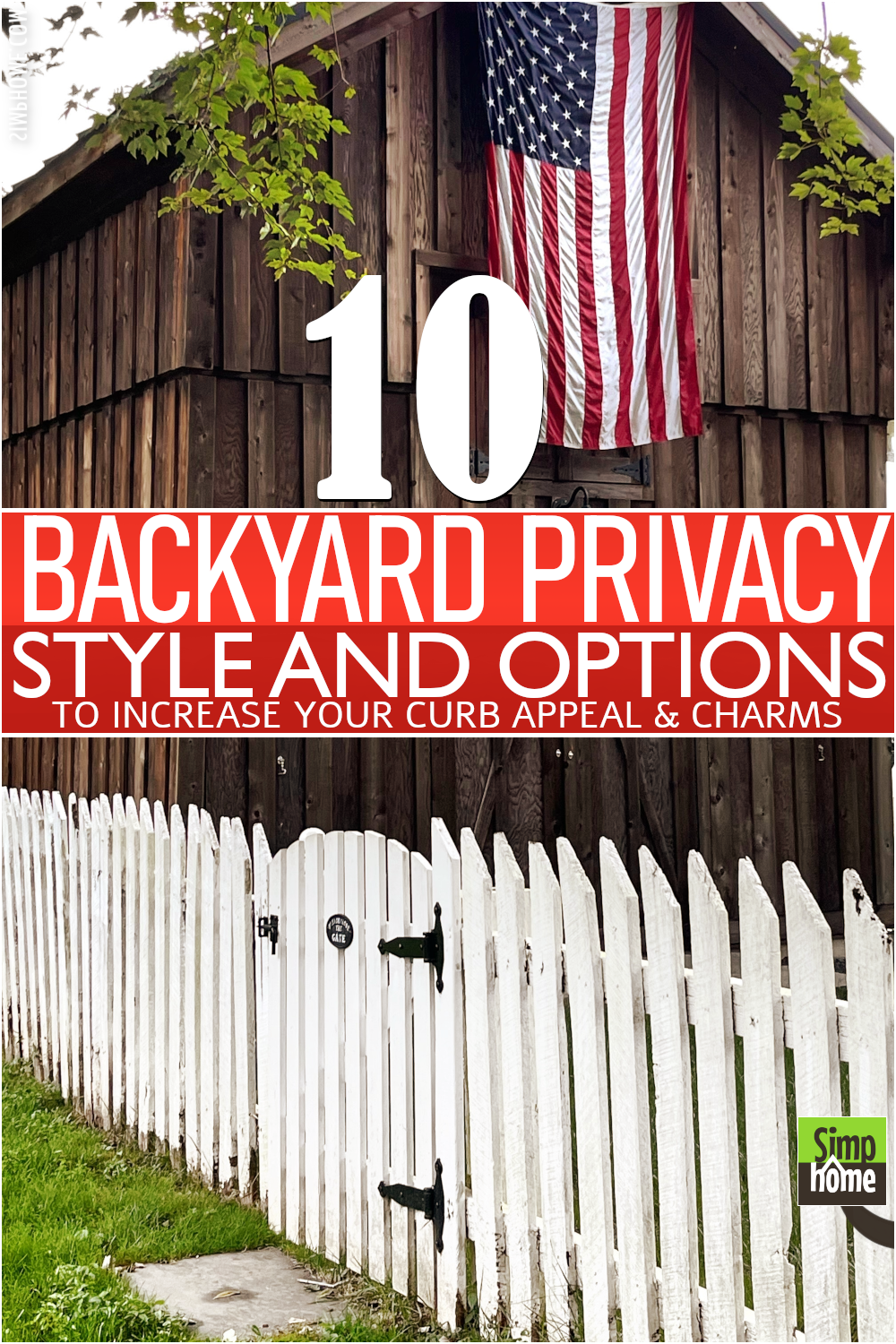
10. The Two-Toned Privacy Fence Idea
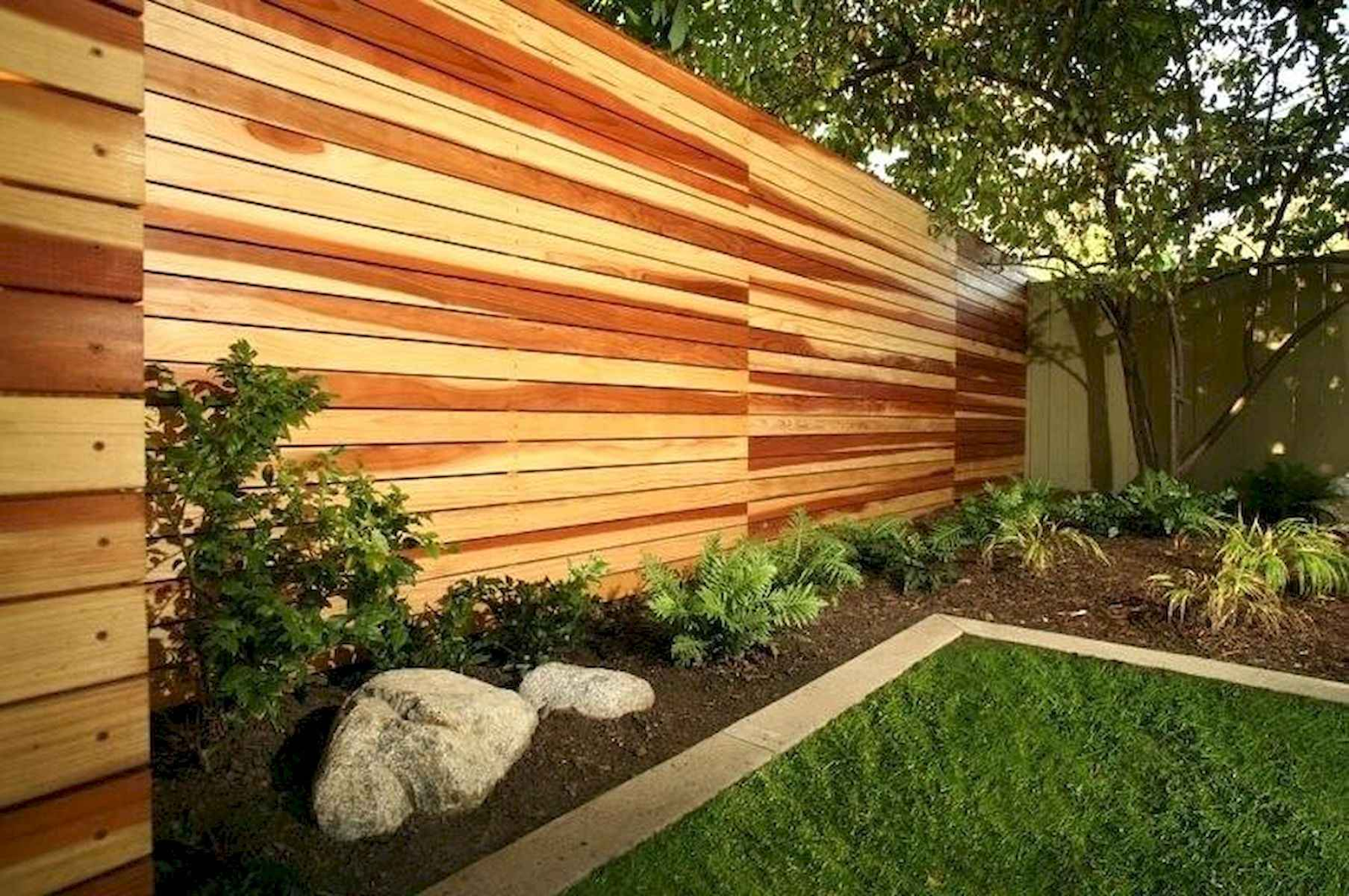 When you build a fence in your backyard, you expect to get the ultimate privacy. It means you focus on function, which is not always bad. Nevertheless, you can go beyond functionality.
When you build a fence in your backyard, you expect to get the ultimate privacy. It means you focus on function, which is not always bad. Nevertheless, you can go beyond functionality.
This fence, for example, provides you the top-notch privacy as the slats completely block the view. It serves not only privacy but also an instant appeal, thanks to the two-toned look produced by the natural grain.
If you want to get this look, do not apply paint to the slats. You will want them to look natural and striking simultaneously. Therefore, you only need to sand them well and stain them to avoid mold.
You will also need to apply a sealer to give better protection to your fence. Since you will expose it to sunlight, rain, and wind, you had better use an oil-based sealer because it is durable and enhances the natural color of darker or yellowish wood.
Consider arranging the slats horizontally because it will allow you to build the fence as high as you wish.
9. Embrace the Industrial Look with Metal Fencing
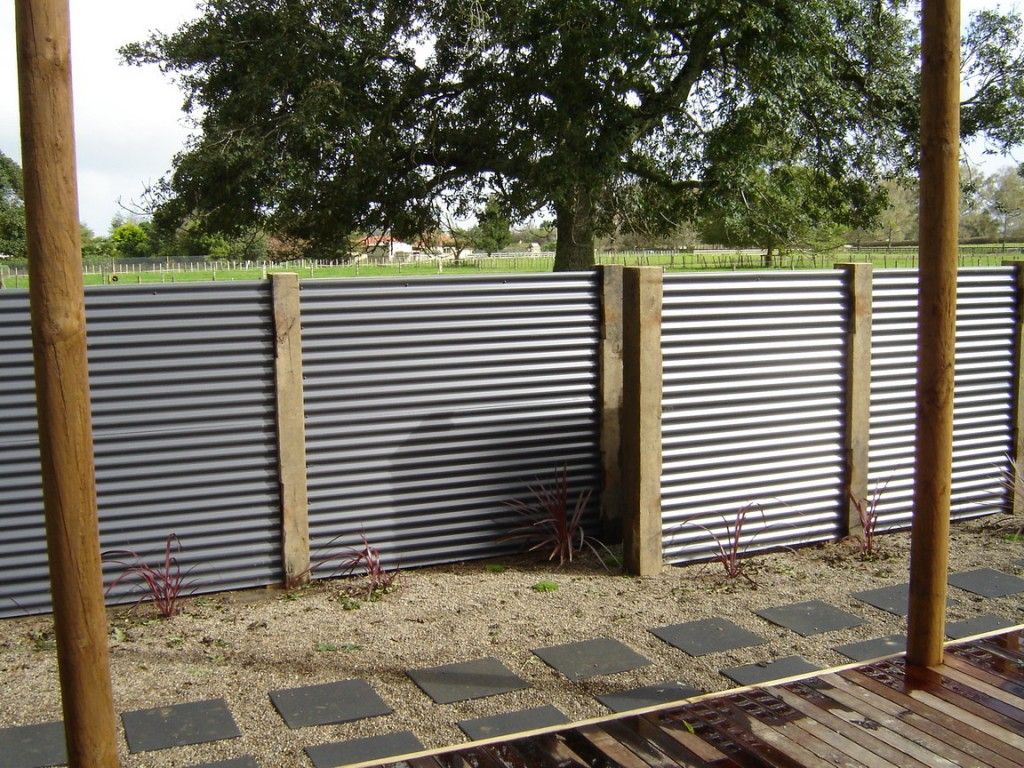 The good thing about metal fencing is that it is durable and can last more than 20 years. Besides, you will not need to apply a waterproofing agent, stain, and paint it each season like you usually do to the wood counterparts, making it require less maintenance. It will not rot after all.
The good thing about metal fencing is that it is durable and can last more than 20 years. Besides, you will not need to apply a waterproofing agent, stain, and paint it each season like you usually do to the wood counterparts, making it require less maintenance. It will not rot after all.
Corrugated metal is usually lightweight. Thus, you can install it easily to meet your style. Moreover, this option is suitable for those who want to carve out an industrial look in the backyard.
The type of metal you choose is another thing to consider. A galvanized aluminum corrugated metal would be your safe bet since it performs well in climate changes, including excessive heat, moisture, and cold.
8. Grow Your Privacy Fence
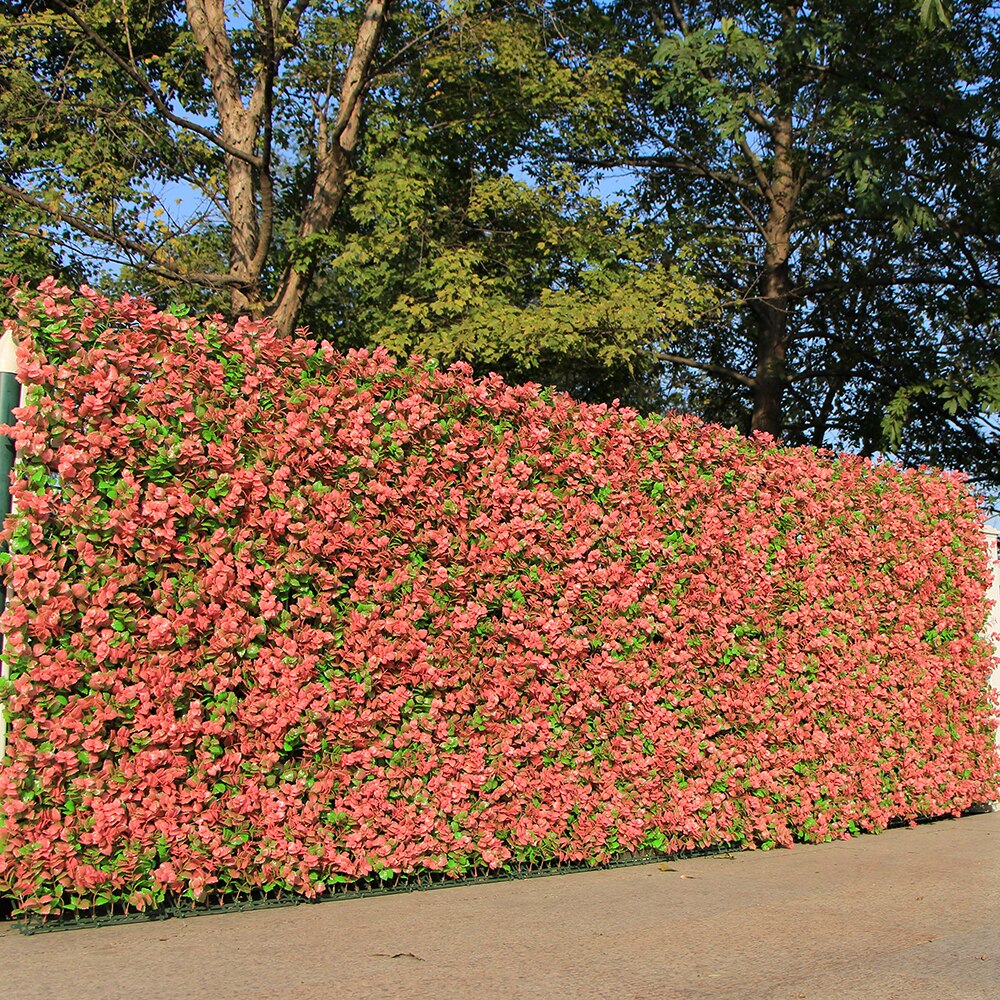
To create a living fence, you will need to build support. Then, plant the shrub or flower close enough to each other, depending on the type of plant you are growing. For example, Emerald Arborvitae or Korean Boxwood requires you to plant them three to four feet apart.
Once the plants grow, you will need to train them by tying the branches together. You can do this by twisting a plant tie or wire around the branches where they intersect. It will encourage the interlocking pattern that allows them to grow together, forming an impenetrable mesh.
Creating a living mesh sounds daunting because it requires regular maintenance. You can still enjoy the exquisite look without the hassle of growing low-maintenance plants, such as bamboo and yew shrubs.
7. Budget-Friendly Privacy Fence Ideas
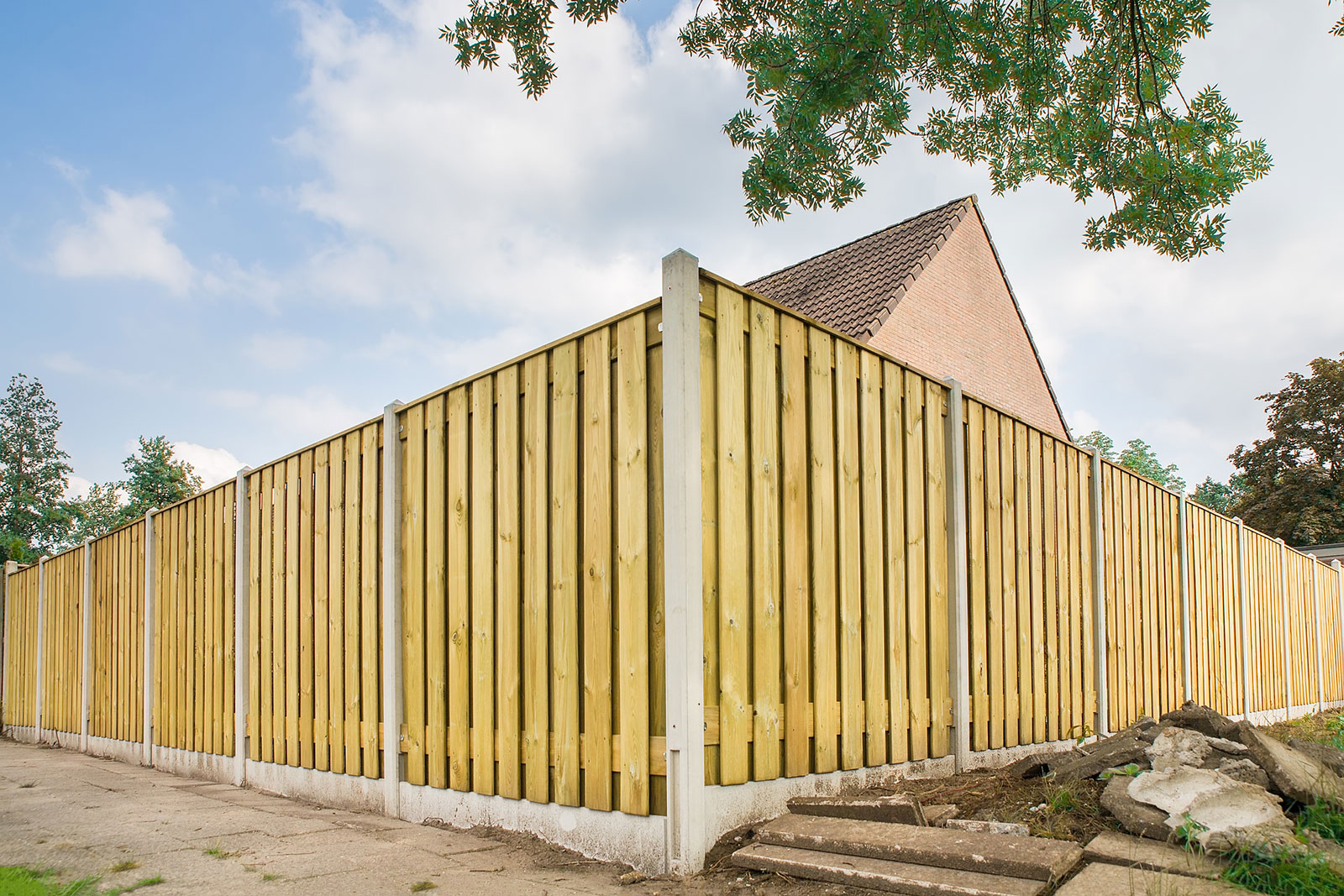 Not all materials can help you earn your privacy. A chain-link fence, for example, will not help you with it since it still exposes the activities happening in the backyard. The same things happen with ornamental wrought-iron fencing and traditional picket fencing. They may look attractive, but they cannot give you what you are after – privacy.
Not all materials can help you earn your privacy. A chain-link fence, for example, will not help you with it since it still exposes the activities happening in the backyard. The same things happen with ornamental wrought-iron fencing and traditional picket fencing. They may look attractive, but they cannot give you what you are after – privacy.
Thus, your best bet is solid materials. Unfortunately, they tend to be pricey, which is unsuitable for a limited budget.
If you are short on budget, you can consider installing bamboo fencing. It comes in solid panels and costs approximately $12 to $23 per linear foot.
Another affordable option is treated pine, which costs around $1 to $5 per linear foot. Besides, it is durable, which makes it an excellent choice for a privacy fence.
6. The Fuss-Free Privacy Fence Options
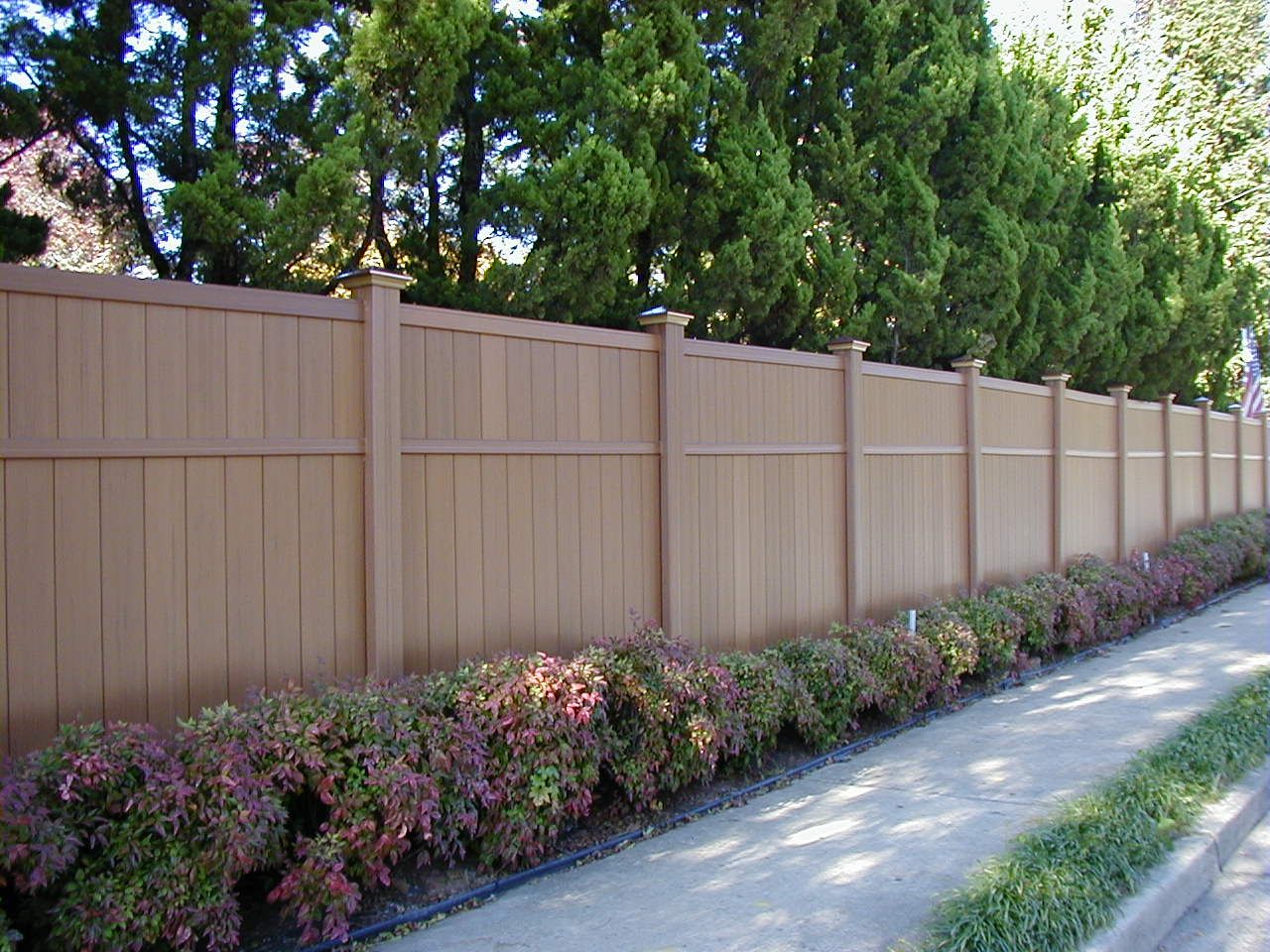 Are you looking for a maintenance-free option since you have no time to regularly take care of your backyard? If that is the case, vinyl fences should be on your list.
Are you looking for a maintenance-free option since you have no time to regularly take care of your backyard? If that is the case, vinyl fences should be on your list.
Vinyl fences will not warp, peel, splinter, and rot. However, they can provide the same striking look as the one found in wood fencing.
Since vinyl does not splinter, you do not need to sand it before installing it. Even better, you do not have to stain or paint it whatsoever.
5. Add Texture with Gabion Wall
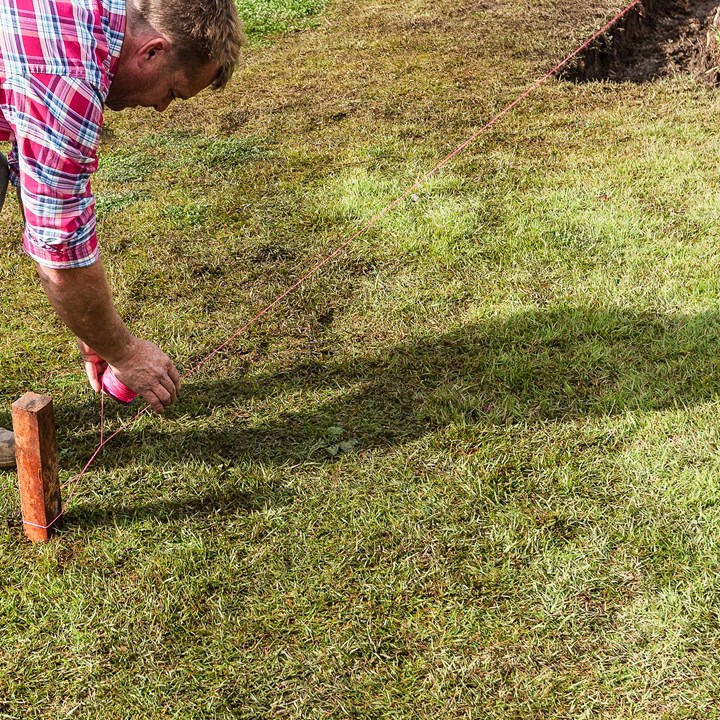 Gabion fencing can be a perfect solution for those looking for a durable and affordable material that will not make you spend much money. More importantly, it only requires little maintenance.
Gabion fencing can be a perfect solution for those looking for a durable and affordable material that will not make you spend much money. More importantly, it only requires little maintenance.
If you want to build your own gabion fence, you need to lay out the site first. Then, you can work on the base. Make sure it is firm and level. Consider replacing about 6-inch depth with a concrete footer if the soil is sandy or clay.
Since gabion fencing has no structural integrity, it needs internal support posts. Once the supports are ready, you can assemble the gabion baskets and fill them up.
4. A Wood and Trellis fence for an Aesthetical Look
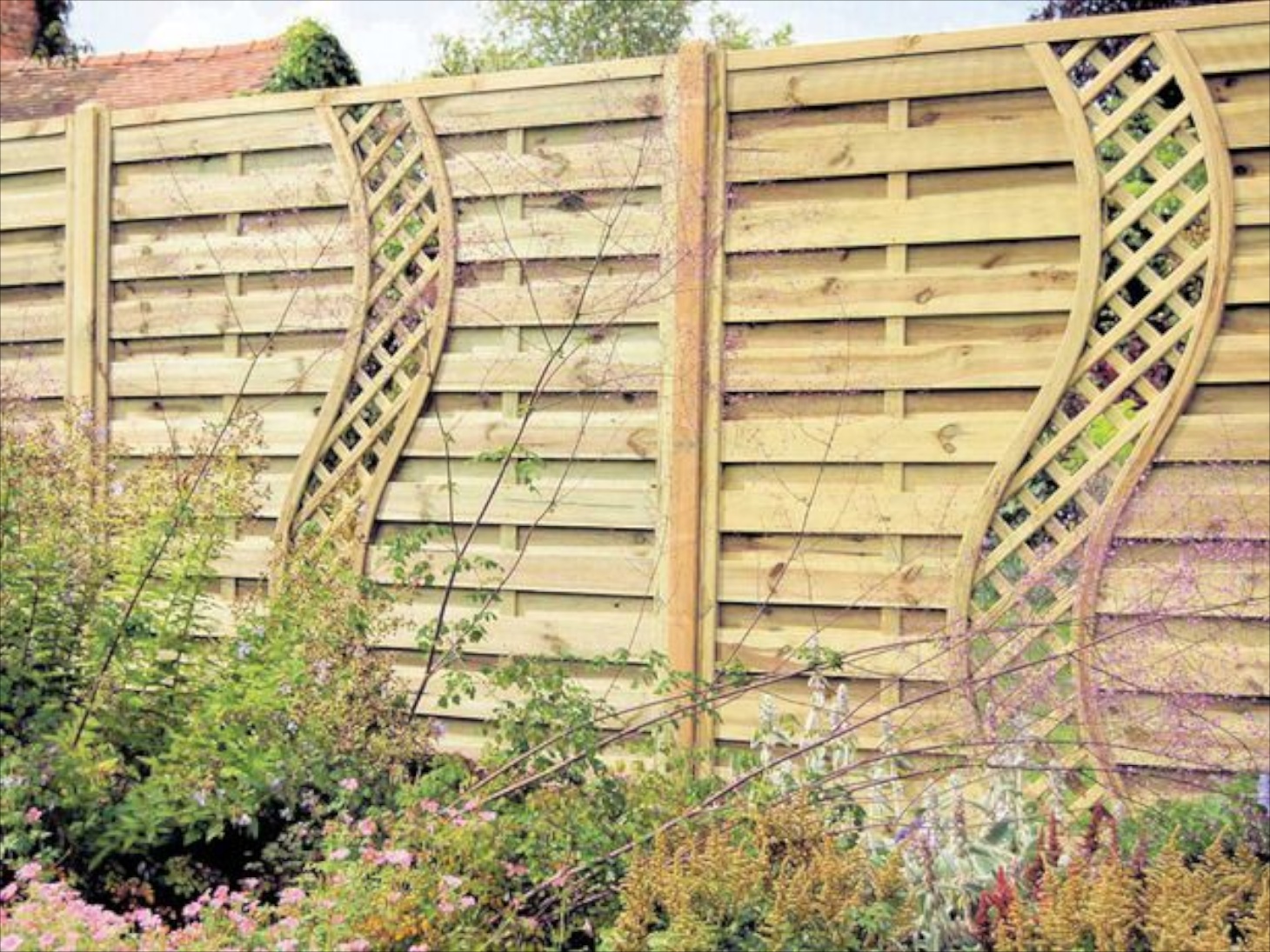 Trellis may not be the best privacy fence since your neighbors and passersby can still see what you are doing. However, it can be a perfect addition to add a subtle interest to your wooden fence.
Trellis may not be the best privacy fence since your neighbors and passersby can still see what you are doing. However, it can be a perfect addition to add a subtle interest to your wooden fence.
For example, this fence features a trellis in a curvy shape that boosts the visual appeal. You can leave the trellis that way for subtle nuance. If you aim for privacy, you can grow vines, such as roses, grapes, or ivy, on the trellis to block the view.
3. Go for a Traditional Look with Picket Fence
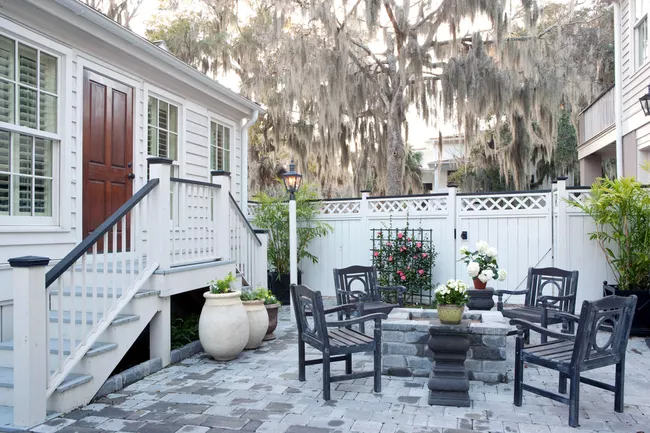 The traditional picket fence will offer a timeless charm to your backyard. Unfortunately, it cannot give you the ultimate privacy you have been looking for. To overcome this problem, you can combine latticework with white wood or vinyl planks.
The traditional picket fence will offer a timeless charm to your backyard. Unfortunately, it cannot give you the ultimate privacy you have been looking for. To overcome this problem, you can combine latticework with white wood or vinyl planks.
This fence, for example, features crisp white vinyl planks topped with lattice detailing, adding a bit of style to it without compromising privacy.
2. Turn Wooden Pallet into a Privacy Fence
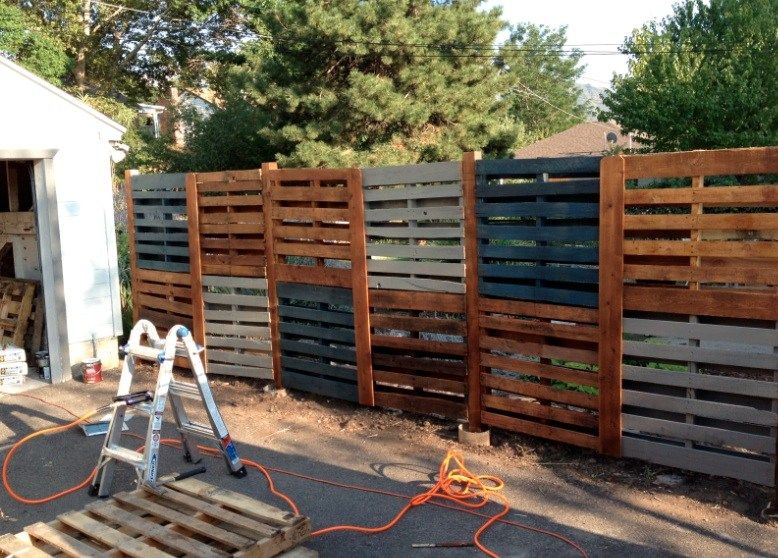 Upcycling unused materials like wooden pallets is also a great way to build a privacy fence without costing you a fortune.
Upcycling unused materials like wooden pallets is also a great way to build a privacy fence without costing you a fortune.
You only need to collect your pallets and put them together. This way, you will not have to spend any money on it.
Lastly, Number 1. Use Log for Your Privacy Fence
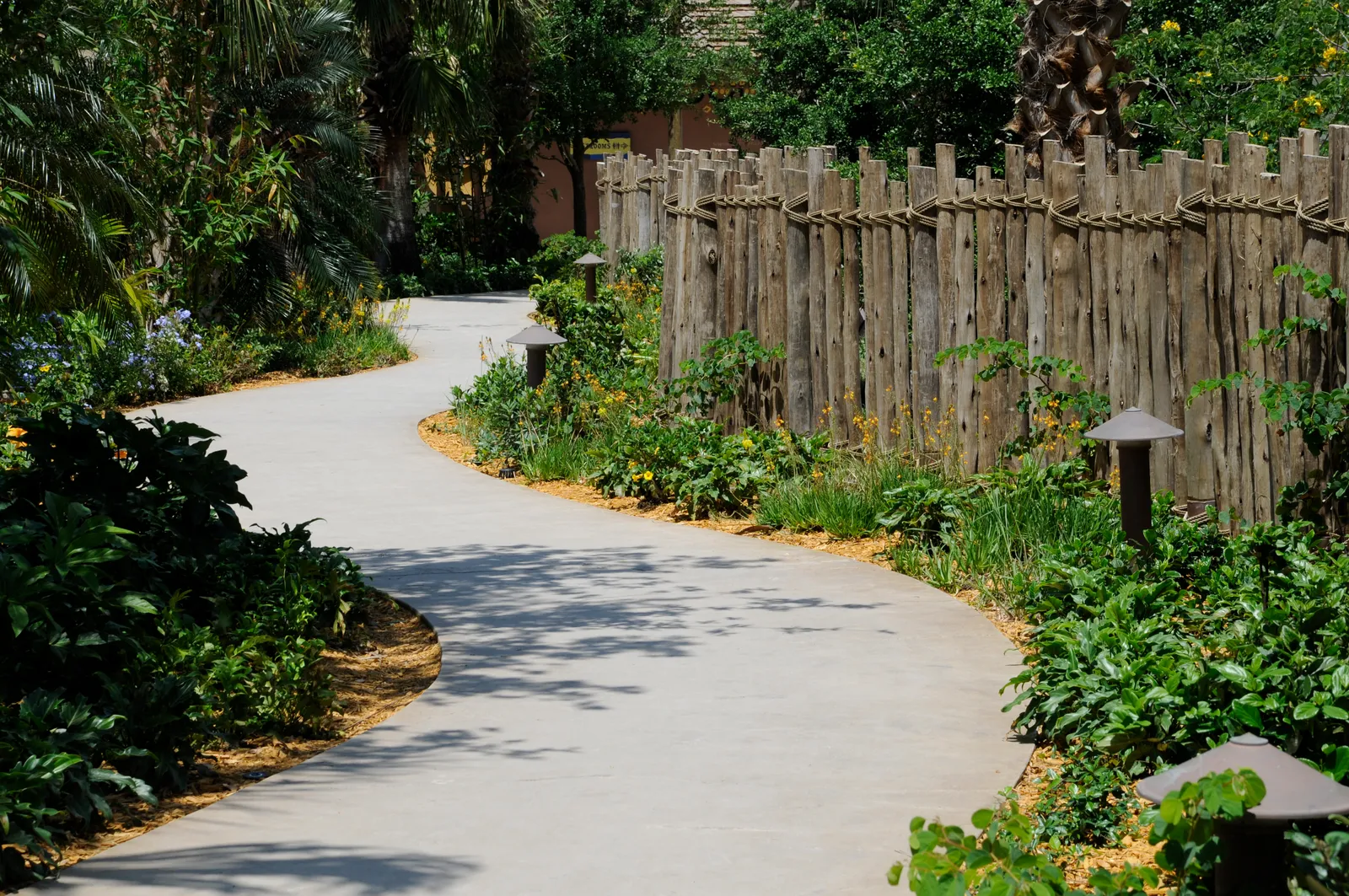 Are you a huge fan of the rustic look? Try this log fencing.
Are you a huge fan of the rustic look? Try this log fencing.
The idea is simple. You need to gather wood logs. It does not matter if they do not come in the same length. In fact, it can be perfect because it can accentuate their natural look. Finally, tie them together and install them around your backyard.
Enclosing your backyard is not supposed to be arduous. Therefore, these 10 backyard privacy fence options help you determine the best way to do it. Some are DIY-friendly, some require less maintenance, and others offer a striking look. So, which one do you choose?
References:
10. Landscapingnetwork.com
9. Nextluxury.com, Greengarageblog.org
8. Nextluxury.com
7. Homeimprovement.lovetoknow.com, Lawnstarter.com
6. Greenwayfence.com, Certainteed.com
5. Familyhandyman.com, Gabionsupply.com, Gabionexpert
4. Familyhandyman.com
3. Bhg.com
2. Morningchores.com
1. Architecturaldigest.com